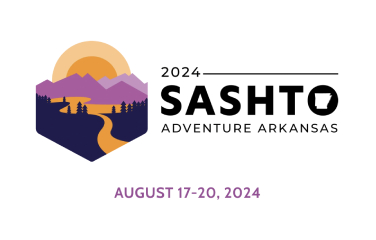Smart Water Irrigation Systems and The Benefits of Using Native/Adapted Landscaping
What is native landscaping?
Selecting the right plants to enhance a street or building project can have long-lasting impacts on maintenance efforts and cost. Native/ adapted landscaping are plantings selected because they are native to or have adapted to thrive in the local environment with minimal irrigation demands, fertilizer or pesticides and are a component of sustainable stormwater management.
Native landscaping (also called xeriscaping in dry climates) features native, drought-tolerant, well-adapted plant species, especially in dry climates, minimizing the need for irrigation. Xeriscaping typically calls for less fertilizer and fewer pest control measures than traditional landscapes. Additionally, when done correctly it improves water quality, conserves water, minimizes the introduction of invasive species, improves the soil allowing for a higher rate of percolation of water and supports insect and animal diversity, including butterflies and songbirds. Native landscaping is being utilized in all settings: residential, commercial, parks, riparian/stream restorations and Complete Streets.
The use of native plants in the landscape is just one component of creating a healthy, watersensitive design. Smart Irrigation Systems help maximize the benefits of native landscaping. Weather in Texas is extreme, with some months (or years) being well above average for rain and others being well below. With these shifts in weather patterns, an irrigation system plays a critical role in plant survivability and health. Today’s Smart Irrigation technology allows owners to provide a more efficient irrigation while meeting the landscape needs. With the appropriate design and irrigation components, a Smart System can be nearly 100 percent efficient with water placement, saving both water and money.
What is a Smart Irrigation System?
The irrigation industry defines a Smart Irrigation System as “an integrated system that provides easy programmability, real-time moisture sensing and goal-based watering algorithms.” In other words, it’s an irrigation system that waters only when needed and in the necessary amounts. Halff has incorporated such systems on numerous projects.
Smart Systems operate primarily with two components: a Weather Based Controller and a Weather Station.
The Weather Based Controller is like any other controller in that it provides power to the irrigation valves and times to turn on and off. However, instead of manually setting a clock to turn the system on, the Weather Station provides the controller data to determine when to turn on based on the actual moisture conditions.
This data includes:
• current weather patterns: rain, humidity, evaporation, wind, air temperature and
• amount of water the plants and the environment have absorbed, called evapotranspiration.
Some Weather Stations work on the regional level with data coming from various local and state weather sensors scattered throughout the region, and some operate with a weather sensor that has been installed at the site providing real-time information. Either way the system operates based on real-time data and the actual demands of the landscaping/plants, including variables such as the Average Rainfall per month, Precipitation Rate, Historic Potential Evapotranspiration (PET) and Plant Water Requirements. Some Smart Systems have the ability to learn. As the system is finetuned or adjusted, the system learns from these adjustments. When installed, operated and maintained correctly, smart irrigation systems can reduce annual water usage by nearly 30%, based on industry reports, and improve the health of the landscaping by providing the correct amount of water when needed. In the modified words of Goldilocks: You don’t overwater, you don’t under-water, you water just right.
The Take-Away
Smart Systems are not a silver bullet when it comes to saving every potential drop of water, but when combined with properly designed and installed native/adapted plants or xeriscape, the proven benefits are significant: reduced water consumption, improved plant health, improved environment for insect and animal diversity and less water pollution with reduced fertilizer and pesticide use. These benefits combine to result in lower maintenance and operating costs, which benefit the public with a cleaner, healthier environment.
Halff has a multi-disciplined team of landscape architects, licensed irrigators, engineers, modelers and planners who work together to help clients achieve long-lasting results and the greatest value for their investments. If Halff Associates can assist your team, please call Executive Vice President Jessica Baker, PE, CFM, PMP, at (214) 217-6692.


